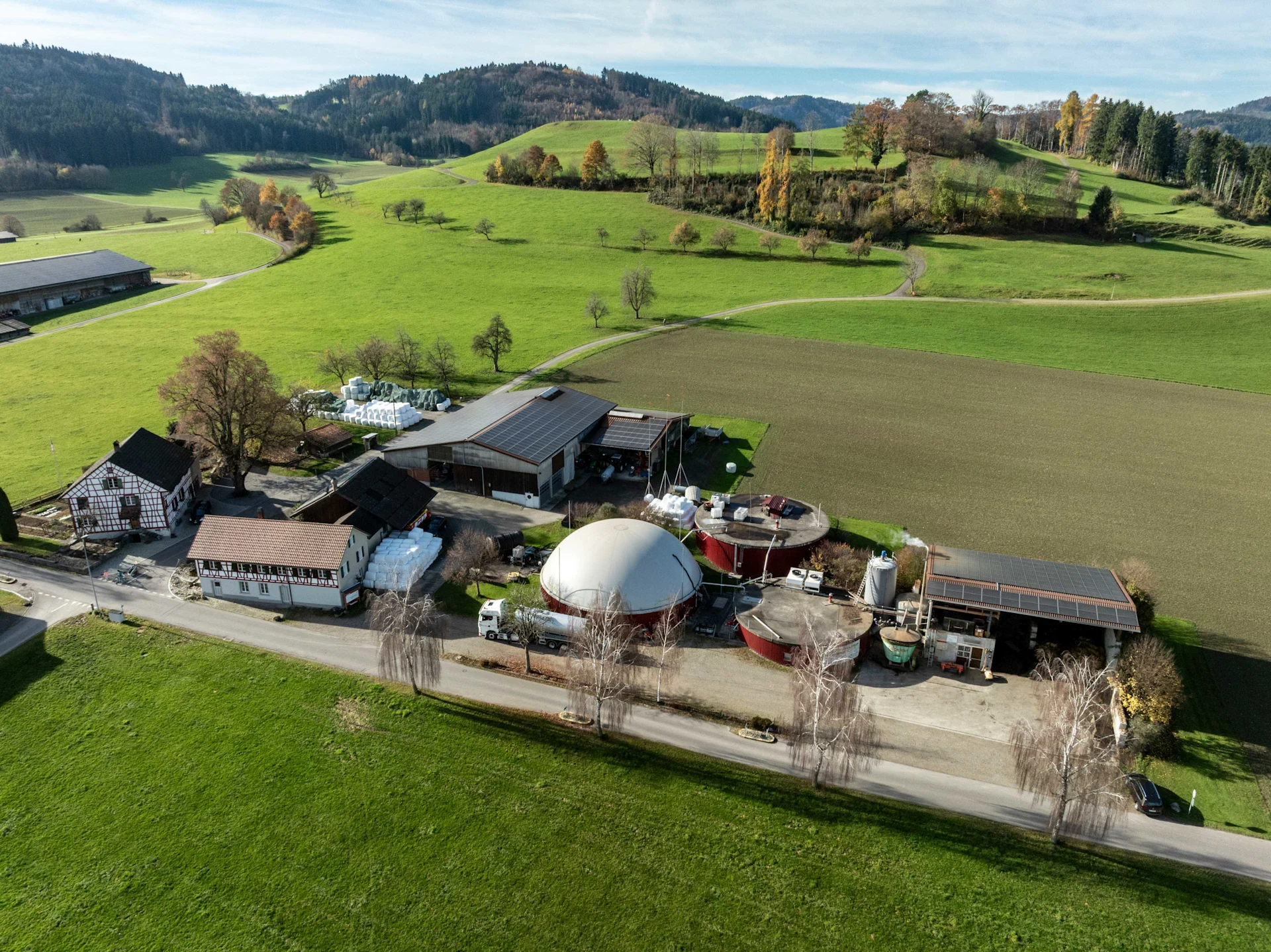
Sustainability
How is biogas produced?
Generated through the fermentation of liquid manure and other residual waste, can then be used for electricity.
navigation
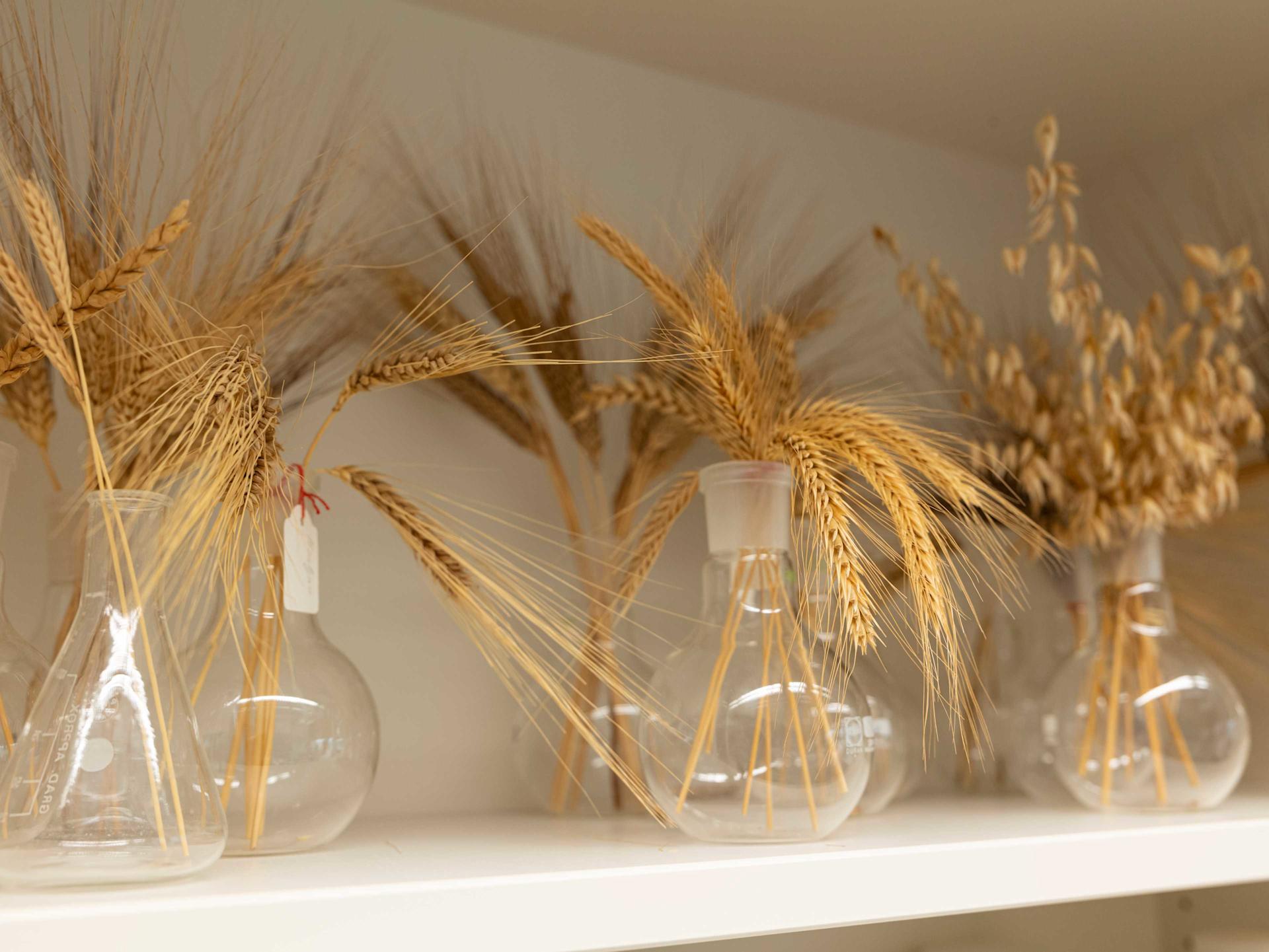
Sustainability
Did you know? A packet of white flour contains up to 30 varieties of wheat, each of which has to be replaced every few years. That's why researchers and Migros are already busy trying to create the perfect flour for the year 2040.
A piece of dough is clamped firmly in a metal holder. A lever slowly begins pulling it downwards. The dough stretches further and further, until it breaks. "This is how we test the dough's elasticity," explains Christian Städeli, Head of Research at Migros Industrie.
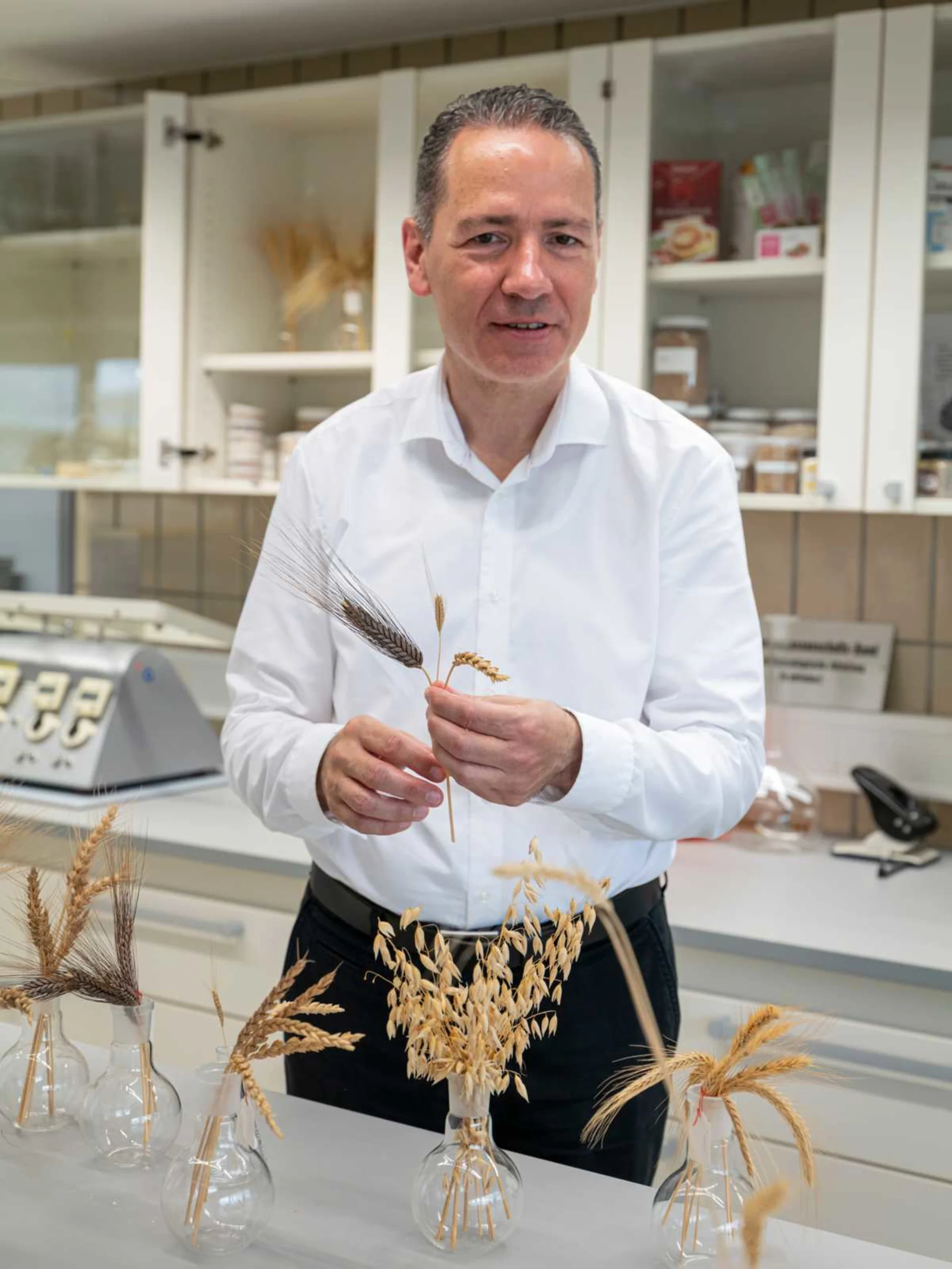
We are at the Migros flour laboratory in Volketswil where all varieties of the current wheat harvest as well as newly bred varieties are analysed and evaluated in great depth. How well can you knead dough made from flour of a particular variety? How well does it rise? And will the bread produced be as airy and the crust as crispy as required?
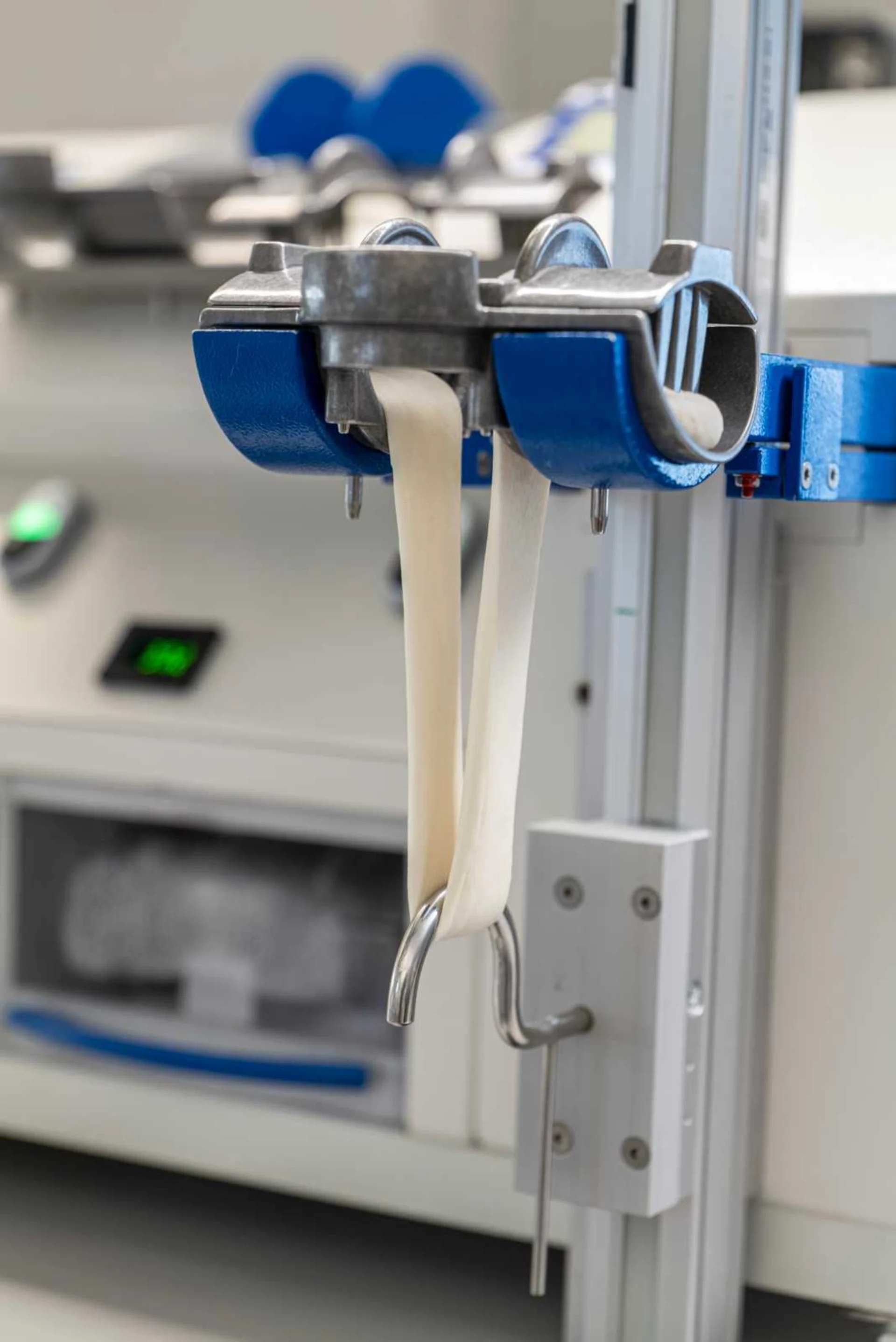
"Wheat must meet lots of criteria before it can be used in baking flour," Städeli says. That's because the different wheat varieties aren't just assessed for their protein, starch and fibre content, but also in terms of how well they perform in the wind and rain out in the field. The variety must be disease-resistant when grown outside the lab, able to cope with increasingly dry summers and deliver high yields. "The baking quality is essentially created in the field," Städeli explains.
The baking quality is essentially created in the field.
"When I was doing my apprenticeship as a baker and confectioner, people still thought you couldn't grow wheat in Switzerland in line with domestic requirements," says Städeli, who later studied food science. At best, the quality would have been good enough for flat, dark bread, it was claimed. For this reason, Switzerland imported almost all of its wheat from the United States and Canada until 30 years ago. Thanks to research by Agroscope, the federal government's centre of excellence for agricultural research, scientists have managed to breed Swiss cereals that are adapted to local climatic conditions. Each of these varieties is named after a Swiss mountain: Piznair, Titlis, Zinal, etc. Together with IP-Suisse, Migros determines the blends of the varieties that are grown in Switzerland. Migros uses only Swiss wheat and is responsible for a third of domestic wheat production.
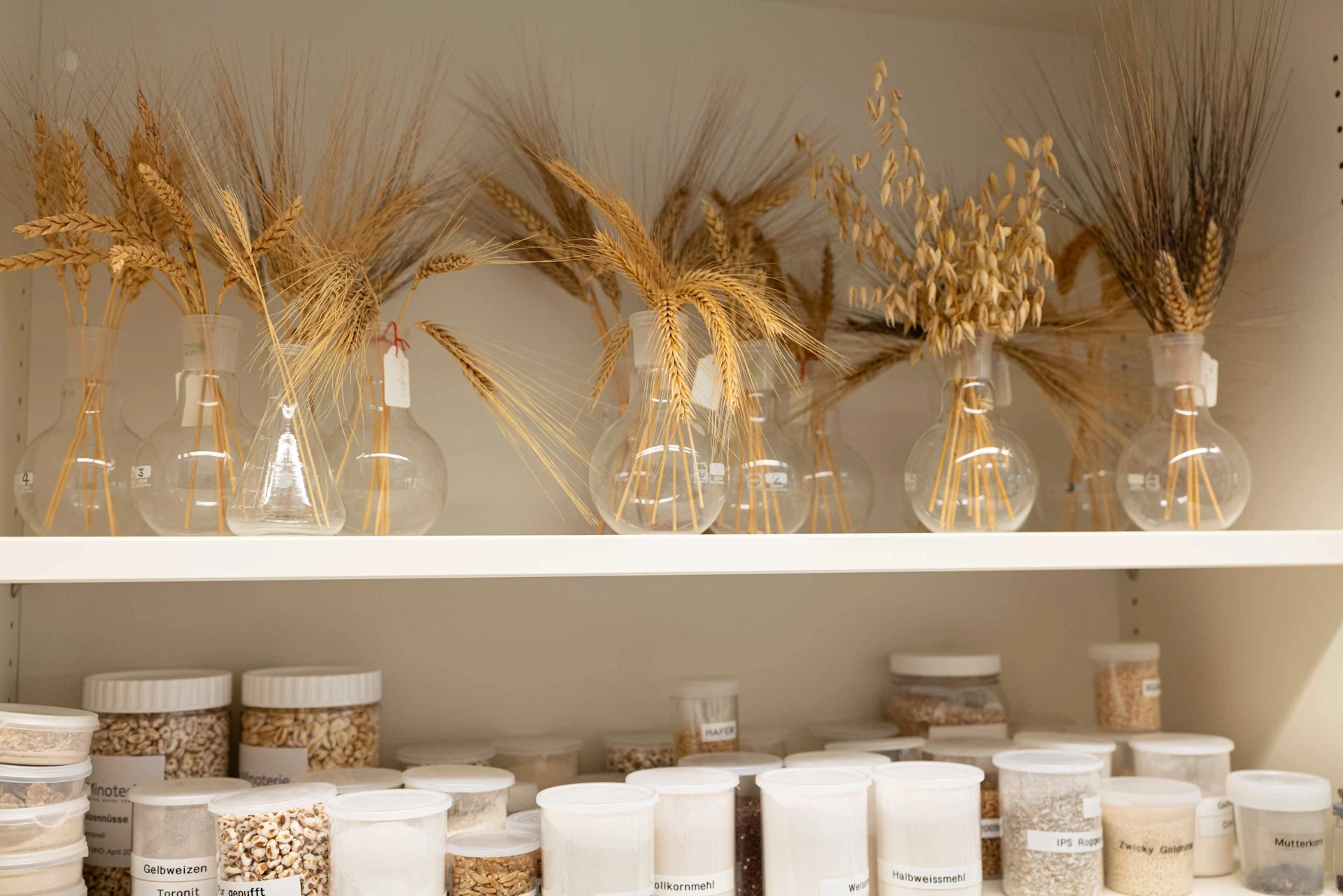
One challenge: new wheat varieties are constantly being required. This is because they 'outgrow' their usefulness over time, as Städeli puts it, by which he means that they become susceptible to diseases, can't cope with drier summers or simply yield less and less. Some are then dropped from the list of recommended varieties after just six or seven years, while others survive for 25 years or even longer. On average, about 250 new wheat varieties a year are tested. More than 120 are currently approved for cultivation.
Migros plays a key role in drawing up this list. "Our laboratory has been around for over half a century. And because we work along the entire value chain, Migros is highly respected in the industry," Städeli says. This means Städeli's tasks change significantly from one day to the next. Some days, you can find him in green boots on a farm, seeing for himself how a variety is doing. "Working closely with farmers is a crucial part of our activities," he explains. On other days, he'll be at the lab in Volketswil, discussing analyses with his staff. Alternatively, he may take part in testing in the sensory department, one floor up, where the appearance, smell and taste of flour and baked goods are evaluated. He can also sometimes be seen exchanging ideas with Laura Nyström at the ETH. Migros is conducting various research projects with the ETH. For instance, one is exploring how the fibre content of white flour can be increased.
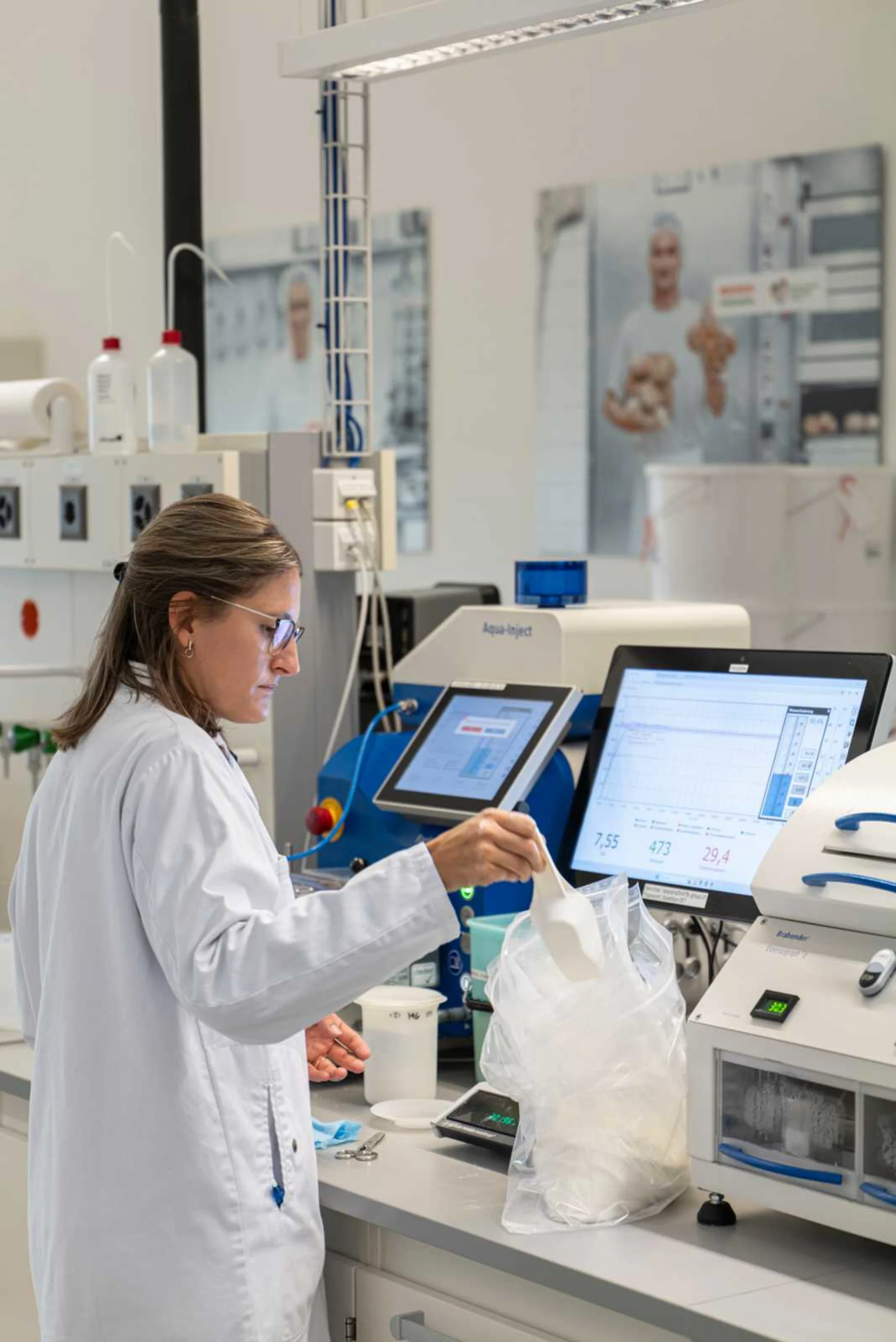
Städeli and his team at the flour lab are never short of work. Between them, the 3500 products baked at Migros bakeries require 300 to 400 different qualities of flour. A flat, caramelised pastry needs a different type of flour than a crispy, voluminous white loaf. In a flat biscuit, the proportion of protein in the wheat must be lower and the quality modified accordingly so that it doesn't get too large.
Even the household flours on Migros shelves that are baked into golden Christmas biscuits or fresh butter plaited loaves in kitchens across Switzerland don't consist of just one type of wheat, but are always blends. White flour, for example, contains between 26 and 30 different types of wheat. Städeli and his team at the Migros flour lab are already working on the right blend for the flour that will be used in 15 years' time, using wheat varieties that will only be grown in fields a couple of years from now.
Sustainability is part of our culture and we still have plenty more on our agenda. Learn more about it in our Stories!